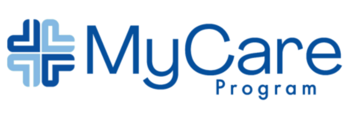Condition: Sjögren’s Syndrome
Brief Overview: Sjögren’s syndrome is a chronic autoimmune disease characterized by lymphocytic infiltration and dysfunction of exocrine glands, primarily affecting salivary and lacrimal glands. It leads to dryness of the mouth (xerostomia) and eyes (keratoconjunctivitis sicca) and can involve systemic manifestations.
Prevalence: Sjögren’s syndrome affects approximately 0.1-4% of the population, with a strong female predominance (9:1 ratio) and peak incidence between 40-60 years of age.
Etiology: The exact cause is unknown but involves autoimmune mechanisms targeting exocrine glands, triggered by genetic susceptibility and environmental factors such as viral infections.
Risk Factors:
• Female sex
• Age (middle-aged and older adults)
• Family history of autoimmune diseases
• Coexisting autoimmune disorders (e.g., rheumatoid arthritis, lupus)
Commonly Associated Conditions:
• Rheumatoid arthritis
• Systemic lupus erythematosus
• Scleroderma
• HIV
• Hepatitis C
Common Medications:
• Artificial tears and saliva substitutes for dryness
• Pilocarpine or cevimeline (stimulates glandular secretion)
• Hydroxychloroquine for systemic manifestations
• Immunosuppressants (e.g., methotrexate, mycophenolate) for severe systemic disease
Common Labs, Imaging, and Tests:
• Anti-Ro/SSA and Anti-La/SSB antibodies (specific markers)
• Schirmer’s test to measure tear production
• Salivary gland biopsy for histological confirmation
• Blood tests: ANA, RF, ESR, CRP
• Imaging: salivary gland scintigraphy or ultrasound
Common Symptoms:
• Dry eyes and mouth
• Difficulty swallowing or speaking due to lack of saliva
• Fatigue and joint pain
• Swelling of the salivary glands
• Dental issues, such as increased cavities or oral infections
Common Treatments:
• Artificial tears and saliva substitutes
• Secretagogues (e.g., pilocarpine, cevimeline)
• Corticosteroids for severe inflammation
• Immunosuppressive therapy for systemic manifestations
• Regular dental and ophthalmologic care
Physical Findings:
• Dry, red eyes with reduced tear film
• Dry, cracked tongue and oral mucosa
• Swelling or tenderness of salivary glands
• Parotid gland enlargement
Potential Complications and Contraindications:
• Dental caries and oral infections due to xerostomia
• Corneal ulcers or damage from severe dry eyes
• Increased risk of lymphoma
• Contraindications for secretagogues in patients with cardiovascular or pulmonary conditions
General Health and Lifestyle Guidance:
• Use humidifiers to alleviate dryness
• Maintain hydration and avoid alcohol or caffeine
• Practice good oral hygiene and regular dental visits
• Wear protective eyewear outdoors
Suggested Questions to Ask Patients:
• Do you experience persistent dryness in your eyes or mouth?
• Have you noticed any swelling in your salivary glands?
• Are there difficulties swallowing or speaking due to dryness?
Suggested Talking Points:
• Explain that Sjögren’s syndrome is a manageable chronic condition.
• Highlight the importance of regular follow-ups and symptom monitoring.
• It is recommended to reduce sugar intake and avoid non-water drinks between meals and 1 hour prior to bedtime.
• Do not smoke or drink alcohol.
• Promote good oral hygiene and routine dental care.
• Conserve tears with side shields or ski/swim goggles, humidifiers, and warm moist compresses.
• Some studies show acupuncture benefits saliva production and symptoms of xerostomia
